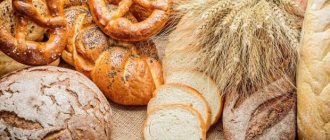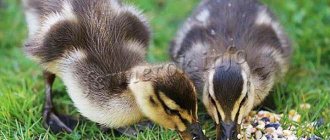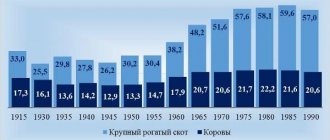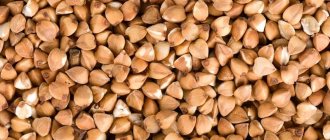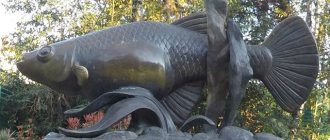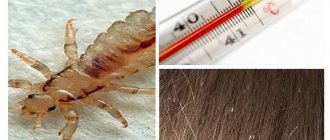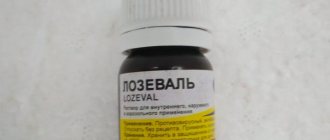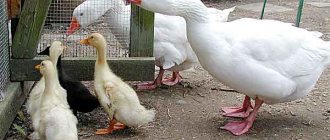The hardest months for birds are the winter months. It is at this time, when the ground is covered with snow, that human attention is especially important for birds. It is very difficult for them to survive the short daylight hours - in 6-7 hours they must not only find food, but also assimilate it in order to survive the long winter night.
Birds in winter are afraid not of cold, but of hunger. Most often they die in severe frosts. To maintain sufficient body temperature, birds spend a lot of energy, which they get from food. It’s good if winter lasts from December to February, but it’s much more difficult when it’s long. After all, the reserves that were made in the fall are simply not enough. Saving birds from starvation is simple: hang feeders outside and don’t forget to replenish them with suitable food.
Many adults and children do not know what to feed birds in the city in winter. The following reminder will help with this:
- Sunflower seeds, peanuts and nuts are one of the favorite delicacies of bullfinches and tits. It is better to crush the seeds with a bottle or rolling pin first. Important: they should not be fried or salted. Salt is not excreted from the body of birds, and they can die from dehydration. The nuts should also be split into at least two halves. If you took several nuts for the squirrels to the park, crush one nut for the birds with your foot and leave it in the feeder. They can also be given seeds of grapes, watermelon, pomegranate, cranberries and citrus fruits (although the citrus fruits themselves are not advisable).
- Feed briquettes or balls contain fat and in severe frosts they will become a very appropriate high-calorie snack.
- Oats – Living up to its name, it is eaten by Common Buntings, Crested Larks and Tree Sparrows.
- Millet and millet are excellent food for buntings and larks, as well as partridges, tits and sparrows. If you don’t know what grains you can feed your birds, give preference to them.
- Raw pumpkin seeds and melon seeds
- Crumbs of dry white bread are the optimal food, but black bread, on the contrary, is harmful. However, the answer to the question of whether it is possible to feed birds bread in winter is rather positive.
- Rowan, elderberry and viburnum , collected in clusters and hung on trees, are ideal food for bullfinches and jays.
- Weed seeds (quinoa, nettle, burdock, horse sorrel) are one of the most accessible and healthy foods for granivorous species.
- Pieces of fat, margarine, lard . Birds will readily peck at them in the city and in the wild. However, they must be unsalted and unsmoked. Tits love lard hanging on a branch most of all.
- Boiled egg . If many different birds regularly fly to the feeder, some of them will certainly like nutritious protein food. Grate the boiled egg along with the shell - this is a rich source of calcium. It is especially loved by insectivorous species - thrushes, robins and waxwings, which winter in cities.
| Feed | Peculiarities | Who eats |
| Sunflower seeds | Seeds should make up 60% of the total feed (enough calories, protein and fat) | Sparrows, tits, woodpeckers, nuthatches and many other birds |
| Rice | Boiled (ready-made) or “raw” cereal (without the use of seasonings) | Sparrows, goldfinches, pigeons and many other granivorous birds |
| Corn | Dried beans | |
| Nuts | Any nuts that are not salted or roasted | Woodpeckers jays and other species |
| Millet | Boiled (ready-made) or “raw” cereal (without the use of seasonings) | Sparrows, goldfinches, pigeons, greenfinches and others |
| Millet | Dry food (often sold as pet parrot food in pet stores) | Sparrows, goldfinches, pigeons, greenfinches and others |
| Oats | Boiled (ready-made) or “raw” cereal (without the use of seasonings) | Sparrows, tits, goldfinches, pigeons, greenfinches and others |
| Wheat | Boiled (ready-made) or “raw” cereal (without the use of seasonings) | Sparrows, goldfinches, pigeons, greenfinches and other granivores |
| Meat | Prepare small pieces of raw or dried meat without salt or spices. | Tits, goldfinches, nuthatches and other species |
| Salo | Raw lard without salt. Can be attached to a stick or string | Tits, goldfinches, nuthatches and other species |
| Beef or chicken fat | We recommend mixing with bread. Fat without salt. | Tits, goldfinches, nuthatches and others |
| Dried rowan | Dried berries, you can use hawthorn berries. | Bullfinches, waxwings and others |
| Maple lionfish (seeds) | Fallen maple lionfish seeds are harvested in the fall. | Bullfinches, waxwings, tap dancers and others |
| Conifer cones | From various types of trees, with nuts | Woodpeckers, crossbill |
| Acorns | Prepared in autumn | jays |
| Watermelon grains, melon | Additional source of fats and nutrients | Bullfinches, jays, woodpeckers |
| Pumpkin seeds | Additional source of fats and nutrients | All granivorous bird species |
| Egg shells | Good source of calcium for the body | For all types of birds |
Is it possible to give tangerines to birds?
What should not be given to birds: salty, fried, sour, hot, spicy peels of citrus fruits - lemons, tangerines, oranges; black bread is strictly forbidden - it contains more salt and yeast than wheat, it causes fermentation and diarrhea, and if left to be preserved goiter, the bird may die
Interesting materials:
How to remove and reinstall Play Market? How to delete and insert pages in PDF? How to remove and reinstall chrome? How can I remove my browser? How to delete a cell without shifting in Word? How to delete a cell in a LibreOffice table? How to remove Yandex bar from Internet Explorer? How to remove Yandex browser from your phone? How to delete a Yandex money account? How to remove Yandex launcher from your phone?
Who to feed in winter
First of all, small representatives of the passerine family need feeding. City residents traditionally love doves - biblical symbols of peace and purity. In urban conditions they cope well without outside help.
Let your attention be focused on insectivorous species that switch to plant food with the first snow. It is more difficult for them to survive in cities, but they bring many benefits to the environment. When spring comes, these small birds will begin to eat dangerous insects that destroy parks and squares.
Save the tit in winter, and it will save the tree in summer. Great and blue tits, brown-headed tits and marsh tits, nuthatches, and common pikas are not a complete list of those that trees need most. Bullfinches, larks, partridges, sparrows and other helpless birds that are hampered by a thick layer of snow in their search for food also need feeding.
Which birds come to the feeder in winter, and which bird will not appear at the feeder in winter?
When installing a feeder, you should be aware that it is always a source of debris. Therefore, feeders have no place on windowsills and balconies of houses (your neighbors may complain). It is best to install it on trees at a height where they will not be accessible to children who want to misbehave and knock it down (or add junk food).
Read also: How to attract birds to your garden
It is possible that along with the “good-natured” birds, you will also notice “brazen” thieves such as crows, pigeons, magpies and jackdaws. However, most often they eat in feeders:
- Sparrows
- Bullfinches
- Tits
- Nuthatches
- jays
- Goldfinch
- Crossbill
- Pika
- Waxwing
- Chizh
Birds wintering in the city
Reviews from people about feeding tits
I tried feeding them dry cereals (millet, rice), but they won’t eat! But boiled in the form of porridge, it’s normal to eat. I fed them with watermelon, zucchini and melon seeds, cookie crumbs, and whatever. My daughter forgot the ice cream by the open window, so they pecked at the ice cream and ate almost all of it) It is undesirable to give only salty foods, salt is harmful, and they begin to thirst. In winter, I noticed how they actively eat snow at the same time (this is when I unknowingly gave pieces of salted lard at first), so they try to get drunk. And after roasting the seeds they eat snow, they also suffer from thirst. Olga Morosa, Penza
***
And I often buy mixtures and food for canaries and parrots at the pet store. Although it comes out a little expensive. Marina P., Moscow
***
In winter, except for seeds and lard, everything else is not very suitable. We cooked oatmeal and buckwheat, but in cold weather everything instantly freezes, turning into a piece of something unknown. And tits are reluctant to peck the resulting substance, especially when there is an alternative - seeds. And in the summer they even gave us grated carrots at the dacha and also pecked cucumbers). Tatyana Viktorovna, Omsk region
***
And I poured everything I could find into the feeder: VAKA plus food (a mix of cereals, seeds, some bran and crumbs), leftover crackers, wheat flakes from the dry remains of muesli, even dryers (pieces). You can buy several kilograms of unhulled sunflower seeds at the market; they sell them by weight. Olga Sh.R, Zvenigorod
***
Salo - I don't know. If in a piece, it freezes as a single piece of ice, plus look for this lard somewhere (I don’t eat it myself). Plus, I noticed that when there was lard and seeds in the feeder, the tits didn’t touch the lard at all, they all leaned on the seeds. Apparently they like them better. And try to make the feeder with a secret, otherwise the fat pigeons and sparrows will gouge everything and eat it. Pigeons have no brains; they will scatter everything, spoil it, trample it. And all in just half an hour. Therefore, let the pigeons hang out in the trash heap and near the shops, and there is a special feeder for the tits. They just figure out how to eat from it, but sparrows and pigeons don’t fumble at all). Alexey S., Balashikha
Feeding animals with buckwheat
Russian veterinarians claim that buckwheat is one of the main products available and healthy for nutrition. Both brown and green cereals are equally suitable for animals and birds. They differ not only in the method of preparation, but also in their preparation: the kernel gets its brown color after frying. This process increases shelf life but reduces nutrient concentration. Green buckwheat has a different taste from buckwheat, but is richer in chemical composition.
Large farms also purchase buckwheat bran and flour dust, which are a by-product of cereal processing. In addition to whole grains, you can use:
- crushed cereals or prodel;
- flakes;
- Smolensk groats.
The benefit of buckwheat lies in its nutritional value. Cereals contain:
- a lot of protein;
- minerals (large amounts of sodium, calcium, copper, sulfur, iodine, etc.);
- vitamins of group B, PP and E.
Buckwheat straw is also used in feed: it is a low-calorie and nutritious feed, rich in fiber.
Despite the fact that buckwheat is a versatile and healthy forage crop, an allergic reaction is sometimes possible. Animals may have individual intolerance to the product, genetic diseases that cause allergies to minerals or dietary fiber, as well as acute gastrointestinal diseases.
conclusions
As conclusions, here is a complete guide and advice from ornithologists in one table:
| What can you feed | What not to feed |
| Unroasted and unsalted sunflower, pumpkin, flax, watermelon and melon seeds | Black rye bread |
| Unsalted lard and meat | Millet and wheat groats |
| Dried berries: rowan, viburnum, bird cherry, hawthorn, cranberry, lingonberry | Baked goods and yeast baked goods |
| Wheat bread crackers | Potatoes, peas, cabbage, onions, spicy herbs |
| Eggshells and chalk | Dairy |
| Boiled eggs | Any salted, fried, smoked, spicy foods |
| Non-roasted nuts: walnuts, pine nuts, hazelnuts, almonds, cashews, peanuts | Spoiled food, rancid grain products |
| Cereals: oats, rice, millet, pearl barley, oatmeal | Cereals: millet, buckwheat and barley crops |
How to get kids involved in bird feeding
It is best to feed birds in winter together with children. This way they will learn to care for our smaller brothers and love nature. To do this, you can turn feeding tits and sparrows into a game.
For example, one piece of lard can be tied to a branch, and from the bottom you can make a small swing from another piece. This way the birds will have lunch, and the children will have fun seeing a titmouse on a swing.
If you wait long enough, the bird will take food even from human hands, but for this you will need to be patient.
Alternatively, you can take the pine cones and roll them in bird treats, and then hang them on tree branches. Simply put, the act of simply feeding birds during the winter season can lift spirits even in inclement weather. Everything, of course, depends on a person’s imagination.
What not to feed birds in winter
City and forest birds should not be fed table scraps. Boiled porridge, grease from a frying pan, moldy bread - all this will harm birds. The porridge will freeze or spoil, the fat will stain the plumage, and the bird may die from hypothermia. Mold, which attacks many foods, is just as harmful to winged guests as it is to humans. However, all this is readily eaten by rodents and pigeons - dubious guests of your feeder.
Is it possible to feed birds millet, buckwheat or pearl barley in winter? Yes. But not all seeds can be seen in the table of permitted feed. The exception is fruits whose seeds contain cyanide. This applies to all Rosaceae, the list of which includes:
- apples and pears;
- cherries;
- plums;
- apricots and peaches;
- nectarines.
Why do we give rice to fighting birds?
A special diet is being developed especially for fighting cock breeds , since their body needs an increased rate of protein and vitamins. It is based on mixed feed. There are all kinds of additions to it: dairy products, herbs and even meat. Rice cereal is also added.
Due to the high content of vegetable protein, rice stimulates muscle growth and saturates the body with energy. Another of his merits is strengthening the skeletal system.
What does a tit eat in nature?
Tits are tiny workers who spend almost their entire lives searching for food. Of course, their diet largely depends on the time of year. In the summer, having a wide choice, they eat what they like best. And in winter - what you can find. Many bird lovers are interested in what tits eat.
Beautiful tit
In the warm season
The main part of the birds' diet is insects. Moreover, tits do not have any special dietary preferences. They eat worms, butterflies, beetles, cockroaches, dragonflies, ants and many others with equal pleasure.
Even the powerful chitinous shell that some beetles possess does not save them. Cunning titmice hold the prey with one leg or push it into a suitable fork between branches, after which they peck at the shell, easily getting to the desired delicacy. Their beak is perfect for this - small and sharp, it easily penetrates hard chitin, despite the relatively weak blows.
This is interesting! Many gardeners feed birds in the winter so that in the summer they will remain on the site and destroy insect pests.
When feeding chicks, they are more selective, trying to catch only small (no more than a centimeter) caterpillars. This choice is not accidental - the small size of the prey allows the chicks to easily swallow it. And caterpillars, unlike beetles, cockroaches and even dragonflies and ants, do not have hard chitinous parts. Therefore, the fragile stomachs of the chicks easily digest the prey they bring.
In summer, flying actively, birds spend a lot of energy. And to restore it, they eat a lot. As a result, in just a day they destroy approximately the same number of insects as their own weight.
Experts and ordinary observers have repeatedly noticed that titmice do not disdain carrion. For example, in forests they often feast on killed or dead ungulates. There are especially many of them in the spring, after the snow melts.
Tit at the feeder
The list is not limited to live food only. In autumn, when the number of insects is reduced, and due to close frosts the bird has to gain additional weight - this will allow it to survive the cold winter. Therefore, they switch to plant foods. First of all, these are cereals - oats, corn, wheat, sunflowers and others. They also do not disdain the seeds of wild plants - serviceberry, rowan, horse burdock and others.
In winter time
In winter, the diet is more meager, so there is no choice - tits eat almost any food they can find.
This is interesting! Only a few tits survive the winter - about 2-3 out of ten. For comparison, in sparrows this figure is no less than 9.
They happily eat seeds and berries of various trees: apple trees, rowan trees, spruce trees. If you are lucky enough to find a caterpillar or larva hibernating under the bark, tits will feast on them too. By eating carrion, they make up for the lack of proteins and fats on harsh winter days.
Optimal Poultry Diet
The question arises about the bird menu. If everything is clear with the diet of wild pigeons, it is worth learning more about the optimal filling of feeders for smaller birds.
Feathered creatures are not tidy. It is common for them to defecate while eating. That is why you should not pour a lot of food into the feeder at once, which can quickly become spoiled. Also, you should not mix feeds with different structure. For example, meat or lard should not be given together with cottage cheese.
The optimal food for birds is a special complex mixture, which should be purchased at specialized pet stores.
The complex composition includes seeds:
Additionally, rowan fruits and bread crumbs are introduced into the bird’s diet. In addition to rowan, you can give birds viburnum and hawthorn berries.
If the majority of birds are completely satisfied with this diet, then such miniature birds as titmice additionally need to be fed with fatty animal food. High-calorie food quickly saturates tits and gives them more strength. Lard and meat act as animal and fatty foods. In order for the birds not to swallow large pieces, but to peck at the food gradually, it is recommended to string the pieces on a thread in the form of beads and hang them near the feeder.
In addition, there is no need to promote the development of laziness in birds. After all, if the feeders are always full of grain, they will not strain and look for a worm under the bark of trees or pick up seeds on the surface of the ground. Such conditions dull the instincts of these creatures and make them lazy and careless.
Acceptable seeds and cereals
For urban pichugs, commonly used cereals can be considered as food. When you go outside, you don't have to wonder if birds eat rice. You can safely take with you a bag of millet, wheat, rice and oats.
Read also: Is it possible to go to the bathhouse if you have a sprained ligament?
In addition, birds will not refuse the seeds of such vegetable crops:
Forest birds love pine cone seeds and acorns. If, while going for a walk, a person takes with him a small piece of white bread, then before feeding it to the birds, he needs to crumble it.
Additionally, birds can add crushed eggshells , which will become a source of calcium for them. Chopped apple pieces, cottage cheese, and small pieces of raw beef can also be added to bird feeders.
From an early age, parents try to instill in their children a wonderful trait - love and the desire to come to the aid of our smaller brothers. The simplest step in this matter is to build a simple feeder and treat the birds from time to time. However, do adults themselves know how to properly provide this assistance so as not to harm the birds? Let's look at this interesting and at the same time difficult issue.
Birds need to be fed correctly
Every year, environmentalists appeal to all residents of the city and villages with a request to show kindness and mercy and hang feeders near their homes. Put grain, seeds, bread crumbs there, and the birds will thank you in the spring. They will destroy pests and entertain you with melodious singing.
It is important to remember that birds receive only part of the necessary food from humans, and must find the rest of their diet independently in nature. An essential condition for a successful feeder is the size of the inlet opening. It should be wide enough so that the bird can easily get inside the feeder and leave it without hindrance.
And if you are patient enough, you can train nuthatches and tits to eat right from your hand.
Spring-summer diet of tits
All summer, the tit catches various small invertebrates, “eating” them with a small amount of seeds and grains, choosing among them the richest in oils and proteins.
In the warm months, these birds destroy huge numbers of:
- Crawling and flying insects (including forest pests) - weevils, forest bugs and cockroaches, aphids, mosquitoes, midges, flies, grasshoppers, crickets, dragonflies, earwigs, as well as ants, bees and wasps, deftly removing their sting before swallowing .
- Arthropods: millipedes, mites, spiders.
- Worms and other small invertebrates.
Tits eat especially many insects and their larvae during the breeding season. And they feed the chicks mainly with small (up to 1 cm long) butterfly caterpillars.
As a supplement, birds peck the seeds of birch, linden, elderberry, maple, lilac, beech, horse sorrel, burdock, pickleberry, as well as rowan berries, serviceberry, blueberry and the fruits of other plants. If they find nuts or other edible seeds with a hard shell, they crush them with their beak, hold them with their paw or place them in a crevice of a tree, and feast on them with pleasure.
Buckwheat in the diet of pets
Buckwheat is a source of vitamins, minerals, essential amino acids and fiber. Properly prepared cereal should become an essential part of the diet of cats, dogs, as well as rodents and birds.
For dogs
In a dog's diet, buckwheat should not exceed 25% of the daily food volume. The quality of the kernel is also important: the grain must be clean, free of debris and traces of mold and mildew. When feeding puppies, it is advisable to choose green varieties - they are richer in vitamins and have a good effect on the growth and development of the pet. Regular feeding of porridge can:
- normalize metabolic processes;
- strengthen the immune system;
- improve the functioning of the cardiovascular system;
- strengthen dental and bone tissue;
- help in the fight against excess weight.
Where to put the food
People often sprinkle grain on the ground or stumps in parks or forests. You can see for yourself that this is not the best idea by observing the birds for a while. To avoid feeding pigeons, rooks, magpies, mice and rats, it is better to make a small feeder and hang it on a branch. Then large birds will not be able to drive away small tits from the feeder. In addition, make sure there is a “roof” that will protect the food from the snow - without shelter, the food will quickly get wet.
- From a plastic bottle
- Made of wood
What should not be given as food
Birds are prohibited from feeding spoiled food supplies that have fermented and are covered with mold. But there are also a number of restrictions that apply to products familiar to humans. They can cause irreparable damage to the health of birds and even threaten their lives :
- Salted seeds , pistachios, cookies, crackers. Birds do not have sweat glands. The entire burden of removing excess salt from the body falls on the kidneys, so they may refuse heavily salted food. The musculoskeletal system also suffers, because some salts tend to be deposited in the joints. Then any movement of the bird will cause severe pain.
- Roasted nuts . This is where fats can cause harm to the body. When oversaturated with them, the organs of the digestive system (pancreas, liver) suffer.
- Rye bread . Due to the accelerated fermentation process, a situation often arises when the bird is blocked from breathing due to gases. This happens because the goiter begins to compress the trachea.
- Fresh wheat bread . It is dangerous because in a humid environment it turns into a sticky substance. It has difficulty moving through the digestive tract and causes indigestion.
- Cherry , peach, apricot kernels, as well as almonds. They are easy to poison because they are rich in hydrocyanic acid.
- Old, rancid millet . Harmful fats accumulate on its surface.
- Potato . The alkaloid solanine, which is found in raw tubers, causes poisoning in birds. The high concentration of starch in boiled potatoes creates an unwanted burden on the stomach.
- Mushrooms . When consuming mushrooms, there is a high probability that spores of clostridia, the causative agent of botulism, will enter the bird’s body.
- Canned food . When preserving foods, sugar, salt, and vinegar are used that are harmful to poultry health.
Interesting things on the site:
Beneficial properties of oats for the stomach
Calorie content and beneficial properties of brown rice

